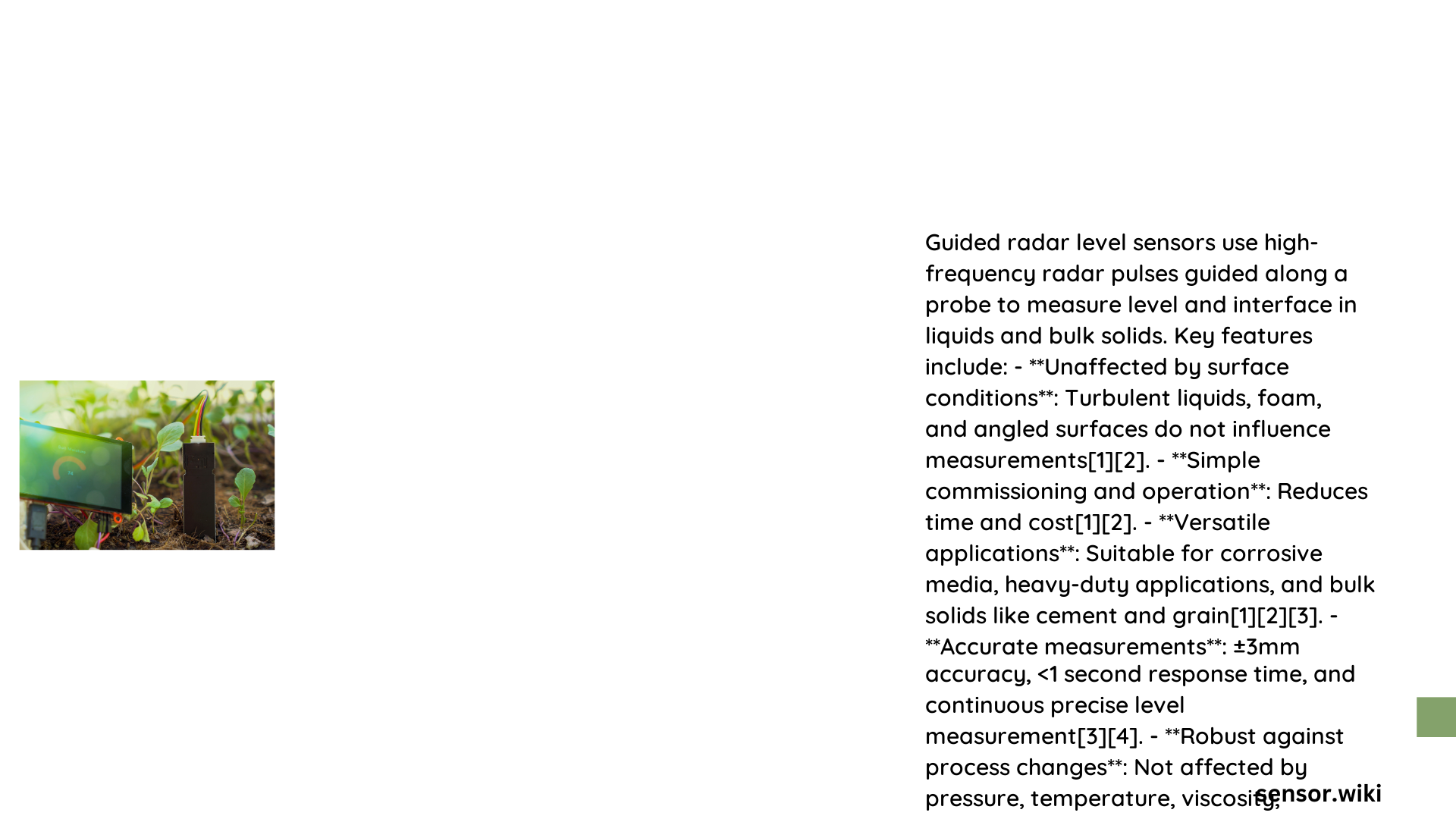Guided radar level sensors represent sophisticated technological solutions for precise liquid and material level measurements across complex industrial environments. These advanced sensors utilize high-frequency microwave pulse technologies to deliver exceptional accuracy, reliability, and performance in challenging measurement scenarios, enabling real-time monitoring and control across multiple industrial sectors.
What Makes Guided Radar Level Sensors Unique?
How Do Guided Radar Level Sensors Operate?
Guided radar level sensors function through sophisticated electromagnetic wave propagation mechanisms:
- Wave Transmission: Sends microwave pulses along a conductive probe
- Signal Reflection: Measures time-of-flight between transmitted and reflected signals
- Distance Calculation: Converts signal timing into precise level measurements
What Are the Core Technical Specifications?
Measurement Characteristics
| Parameter | Typical Range |
|---|---|
| Frequency | Nano-second microwave pulses |
| Accuracy | ±3 mm |
| Temperature Range | -40°C to 150°C |
| Pressure Tolerance | -1 to 17 bar |
What Industries Benefit from Guided Radar Level Sensors?
Guided radar level sensors find extensive applications across multiple sectors:
- Oil and Gas
- Crude oil storage monitoring
- Pipeline level tracking
-
Refined product inventory management
-
Water Treatment
- Reservoir level measurement
- Chemical tank monitoring
-
Wastewater management
-
Chemical Processing
- Corrosive liquid tracking
- High-temperature material measurement
- Interface detection between different liquids
What Installation Considerations Exist?
Mounting Requirements
- Probe Selection: Choose based on tank geometry
- Material Compatibility: Ensure probe resistance to process media
- Environmental Factors: Consider temperature, pressure, and chemical composition
How to Ensure Optimal Performance?
Calibration Techniques
- Zero-Point Calibration
- Set reference measurement point
-
Verify initial sensor positioning
-
Span Calibration
- Confirm full measurement range accuracy
- Validate sensor performance across entire operational spectrum
What Challenges Do Guided Radar Level Sensors Address?
Technical Limitations Overcome
- Low Dielectric Constant Media: Advanced probe technologies
- Foam and Dust Interference: Robust signal processing algorithms
- Complex Tank Geometries: Adaptive measurement techniques
What Future Developments Are Emerging?
Technology Evolution
- Enhanced Signal Processing
- Improved Diagnostic Capabilities
- Integration with Industrial IoT Platforms
Conclusion

Guided radar level sensors represent a pinnacle of measurement technology, offering unprecedented accuracy, reliability, and versatility across industrial applications. Their continuous technological advancement ensures increasingly sophisticated solutions for complex measurement challenges.
